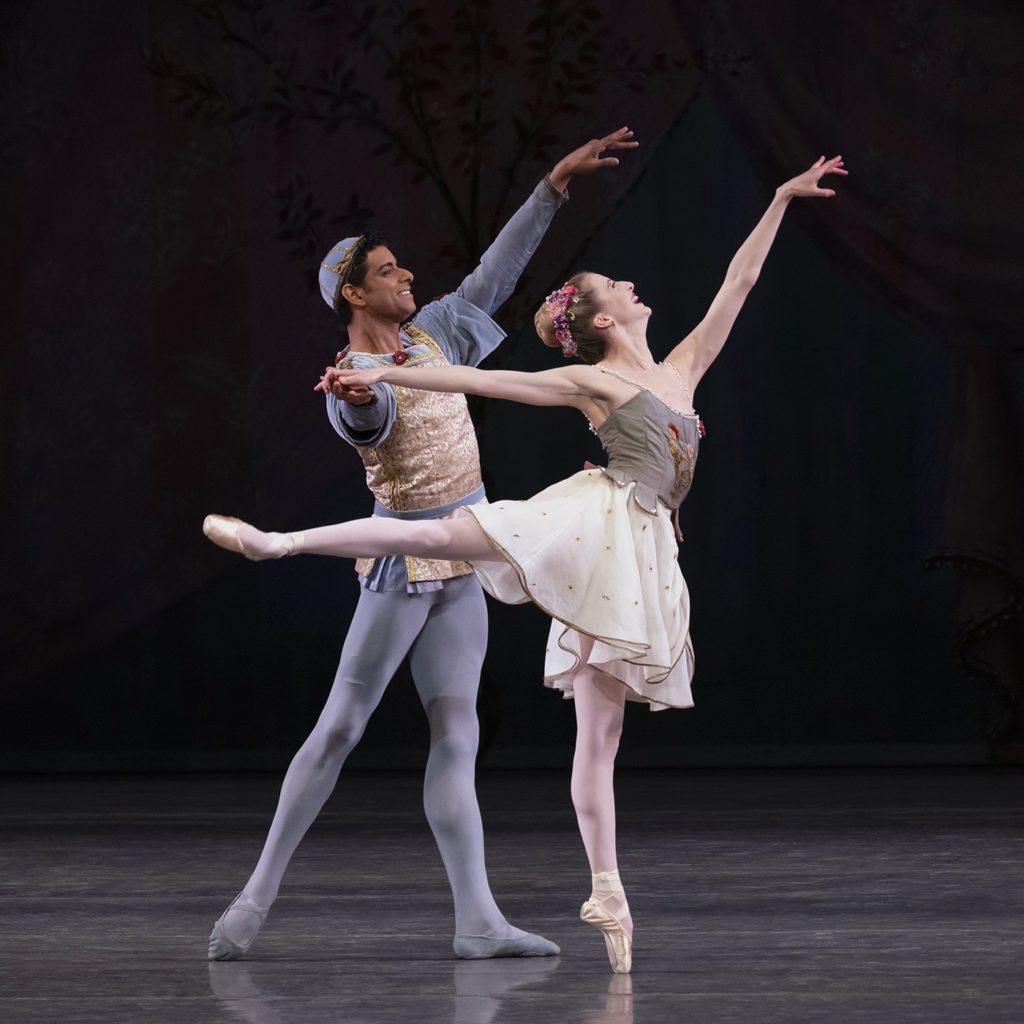The Dream Wars
| Suzanne Farrell as Titania, photo @ Martha Swope |
In 1962, George Balanchine premiered a full-length ballet adaptation of Shakespeare's A Midsummer's Night Dream, set to Felix Mendelssohn's evergreen score. Two years later, Sir Frederick Ashton created his own adaptation of the Shakespearean comedy. His was entitled The Dream. Ballet fans have been arguing over which adaptation is better ever since.
This year I got to see both the Balanchine version (done by NYCB in their spring season) and the Ashton version (ABT is dancing this in their fall season). And I must admit, I'm as flummoxed as anyone else about which version is better.
 |
| Titania and Oberon in The Dream, photo @ Andrea Mohin |
Balanchine's version is a two-act ballet, but most of the storyline happens in Act One. Act Two follows the Petipa model of being a pure-dance wedding divertissement. Balanchine's first act is over an hour long, as he seems determined to tell as much of Shakespeare's story as possible. As a result, it's also rather frenetic -- there are fade-ins, fade-outs and scene changes to accommodate all the storylines he presents: the marital quarrel of Titania and Oberon, the Athenian lovers' quadrangle, the actors' crew, and the noblemen Theseus and Hippolyta.
Ashton's version is shorter (only fifty minutes and one act), but the pacing is much more leisurely. The focus is mostly on the quarrel and reconciliation of Titania and Oberon. The Athenian lovers' are minor roles compared to the Balanchine version. Theseus and Hippolyta are not included.
| Various critters of Balanchine's version |
It's fitting that when Balanchine's curtain rises, the view is on an adorable retinue of bugs. They are played by children of the School of American Ballet. They scamper busily with a Butterfly leading the way, and the ballet is off and running. It sets the tone right away -- things are kind of crazy in Balanchine's forest. Ashton's curtain rises to a rather dainty dance of fairies. He paints with a slower, broader brush than Balanchine.
When it comes to the fairies, Ashton's story has more heart. In Balanchine's version, Titania is haughty and cold, and although Titania and Oberon reconcile at the end of the ballet, the reconciliation seems perfunctory. They're a married couple who has decided to co-exist in their arrangement again. Their lack of connection is highlighted by the fact that traditionally, Oberon is given to a short dancer, while Titania is given to the taller ballerinas. They never actually dance together. They look like an odd couple. Puck in Balanchine's version is a rather gleeful troublemaker. Ashton's Puck is more likable -- a rascal, but not as wild as the Balanchine version.
Both Ashton and Balanchine respond to the character of Puck with very similar steps -- a lot of flying jumps and then scampering little walks. Puck is traditionally cast with a short dynamo of the company. At NYCB, dancers like Harrison Ball or Roman Mejia do it. At ABT, Herman Cornejo practically owns the role.
 |
| The pas with Sibley and Dowell |
Balanchine takes the same music (the Nocturne) and uses it for laughs -- Titania and Bottom have a very funny duet where Titania fawns blissfully over the Donkey-head Bottom. She places a wreath on his head and entices him with some grass, he scratches his ass (pun intended). It's hilarious, but Ashton's use of this music is sublime.
Here is the Balanchine vs. Ashton treatment of the Nocturne.
At other times, Balanchine's response to the music seems more right. An example is the scherzo -- both choreographers make this music a showpiece for Oberon. But with Balanchine, the flying jumps and fast batterie of steps seems to fit the music better than Ashton's somewhat more earthbound rendition. I do enjoy the way Puck weaves in and out of the Scherzo in Ashton's version.
Balanchine humanizes the Athenian lovers. Helena enters in a sad, solitary walk and you immediately feel for her. Later, Hermia's despairing solo is a highlight of the ballet. It almost reaches grand tragedy as Hermia frantically runs through the woods contemplating her lost love. I love the way she runs and then rises on pointe, only to crumple down again. It's like she gets her hopes up, only for them to be dashed. Although the lovers' quarrels and spells might be silly, Balanchine takes them seriously. Ashton does not. They are caricatures in their Edwardian wigs. The women are petulant and sulky, the men vapid.
 |
| Bottom and Titania in Balanchine's MSND, photo @ Andrea Mohin |
If Balanchine's ballet were to end after one act, I'd probably say that Ashton's version is slightly superior. Maybe less funny and zany, but more humane. However, the divertissement pas de deux of Balanchine's second act is some of the most touching choreography ever created in the ballet canon.
 |
| Balanchine's divine second act pas |
It's such a beautiful moment that it tips the scales in Balanchine's favor. That is, until I see the Ashton version and marvel again at how wonderful that ballet is as well.

A delightful comparison. One note: Balanchine's original Puck was Arthur Mitchell, who would be considered tall. His performance (which can be seen in the film) gave an aristocratic elegance to the character that seems to be unique among ballet Pucks.
ReplyDeleteI have seen Mitchell's Puck on film. It's incredible. He had really unique gifts though. He makes the character rather elegant and androgynous which isnt something most Pucks manage to do.
DeleteHaha, we tackled the same idea this time around! Loved your take!
ReplyDeleteThank you! I don't think I've seen both Dreams so close together before.
Delete